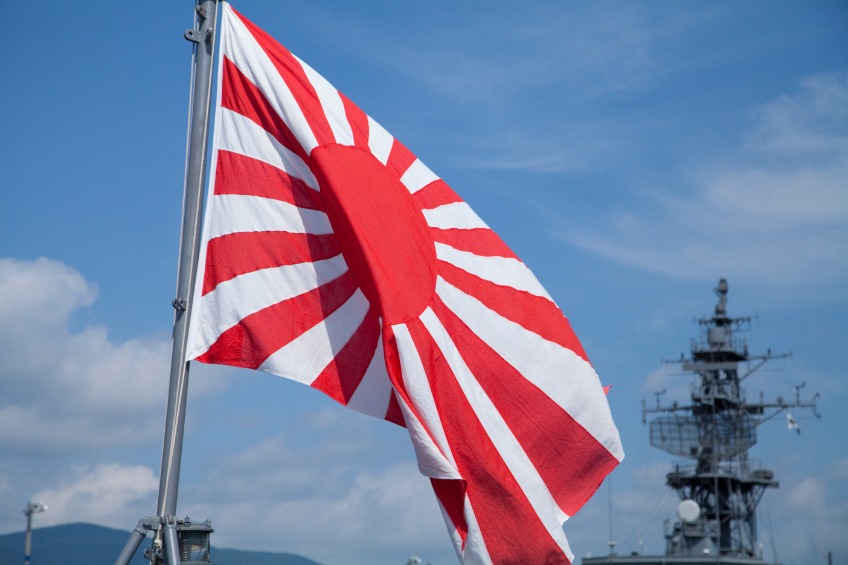Japan’s rising sun flag

Japan rising sun flag
Imperial Japan Flag
Japan’s rising sun flag is one of the most controversial flags in the world. Some see it as a cultural symbol of pride and patriotism. However, since the rising sun flag is also representative of Imperialist Japan, others see it as signifying the various human rights cases of abuse and war crimes the regime perpetrated. For this reason, South Korea requested the International Olympic Committee ban the Rising Sun flag from Tokyo Olympics 2020.
So which school of thought is correct? What exactly does the rising sun flag signify? Read on to learn about this fascinating flag.
What is the rising sun flag?
The rising sun flag is a Japanese flag that consists of a central red disc with 16 red rays emanating from the disc. In plain terms, it depicts the sun.
History of the rising sun flag
The rising sun has a strong symbolic meaning in Japan. This is because the sun rises from the Japanese archipelago, east of the Asian mainland. Hence, references to Japan as the land of the rising sun can be traced to the Asuka period (538 – 710 CE). Early designs of the rising sun flag (known as Asahi flags) were used for festivals, prayers, celebrations, sports events, and more.
However, the military adopted the rising sun flag in 15th-century Japan. Between 1603 and 1868 CE, Japanese feudal warlords used the rising sun flag. On May 5, 1870, the Imperialist Japanese Army adopted the rising sun flag as a policy of the Meiji government. And just a few years later, in 1889, the Imperial Japanese Navy adopted the rising sun as its naval ensign.
However, the horrors associated with the rising sun flag occurred in World War II, when Imperialist Japan was involved in several war crimes across Asia, involving countless massacres. Although Imperial Japanese Army and Navy stopped using the rising sun flag at the end of World War II, it was later re-adopted by the Japan Maritime Self-Defense force in 1954.
The controversy surrounding the rising sun flag
As you can see, the rising sun flag shares a deep connection to Japan’s history. Little wonder the rising sun flag can be seen on clothing brands, products, designs, newspapers, beer cans, comics, video games, and many other places across Japan. Japanese fishermen use it to represent their hope for a good catch. Many fans use it to show support for Japan in sporting events.
At the same time, the rising sun flag signifies past wartime atrocities by Japan. Little wonder many people in China, Korea, and other parts of Asia see the flag as a sign of oppression. Many even consider it on par with the Nazi swastika or the Confederate flag of the southern United States. They argue that when the monumental magnitude of barbarism is associated with any flag, there is no justification for continued usage of the flag.
However, the Japanese government maintains that the Rising Sun flag neither expresses political expression nor militarism.
So, what do you think? Does flying the rising sun flag fail to acknowledge past atrocities or injustices? Or is the rising sun flag a cultural pride despite its past association with military oppression?










